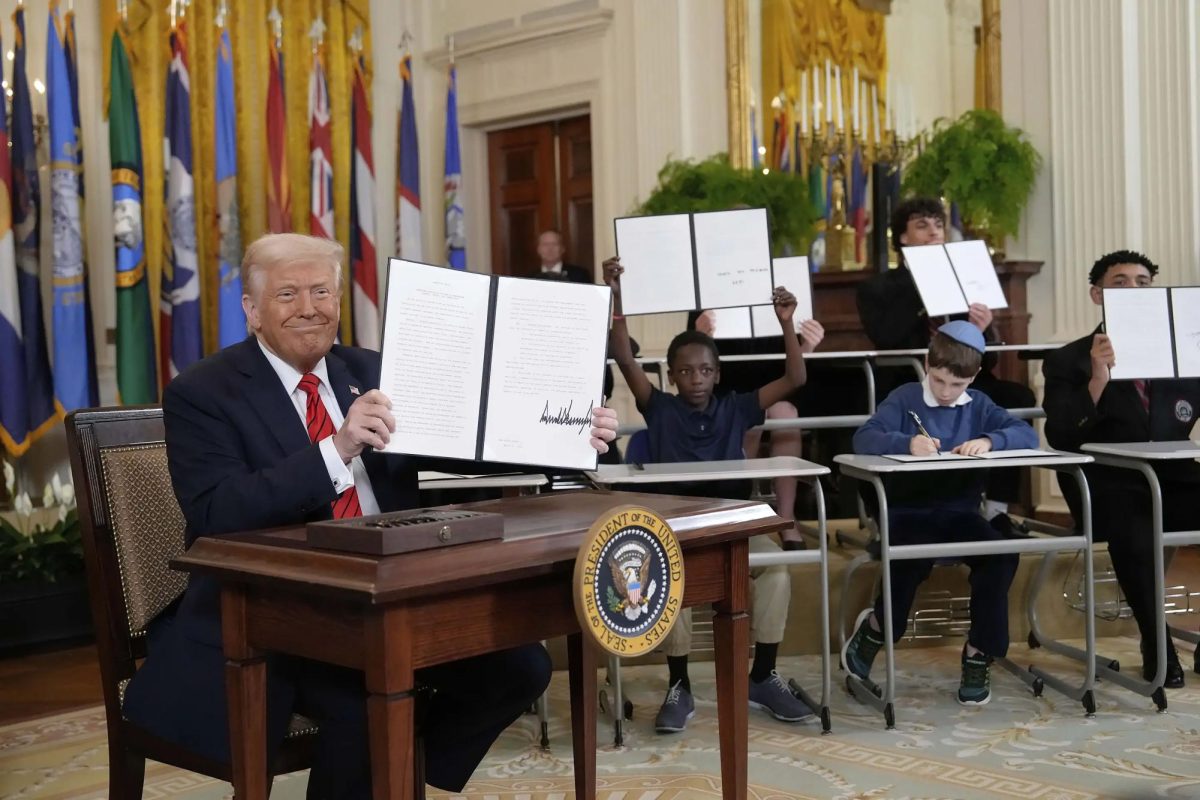On March 20, 2025, President Donald Trump signed an executive order to dismantle the U.S Department of Education, raising questions about the future of the agency and the impact this could have on students, K-12 schools, and universities throughout the country. At this time it is unclear what will happen to the programs the department oversees and the funding that it currently distributes to various educational entities, leaving these institutions unsure how they will navigate the potential consequences.
“President Trump claims he wants to give power back to the states, but as a governor, I know that the way to do that is not gutting the programs and funding that our students rely on,” said Massachusetts governor Maura Healey, a vocal critic of Trump’s executive actions.
Ever since its creation in 1979 by late President Jimmy Carter, however, many Republicans have contended that the Education Department is unnecessary and should be abolished. The Republican Party Platform in 1980 was the first to include the statement that they supported “deregulation by the federal government of public education” and the “elimination of the federal Department of Education,” arguing for education to be managed at state and local levels rather than through federal oversight.
President Trump’s recent order to dismantle the department has been part of a larger plan to eliminate fiscal waste from the government, to help “[ensure] efficiency in government costs and contracts” and “[bring] discipline to a wasteful system,” according to the official White House website (whitehouse.gov).
However, some argue that President Trump’s stance on education funding is less about improving the system and more about political strategy.
“Education is a fundamental aspect and necessary part of success for human life,” said senior Max Zou. “It seems like Trump is doing this just to get more votes.”
Whatever the President’s motives, most experts believe that eliminating the Department of Education will prove difficult. Closing the Department of Education completely would require Congressional approval by 60 of the 100 senators and a majority in the House of Representatives, but the necessary bipartisan support would be unlikely.
Few people understand what the Department of Education actually does; it supervises specific K-12 educational programs, oversees Pell Grants and federal student loan programs, and conducts educational research. They also provide funding for federal initiatives including: Title 1, which assists schools with high numbers of low-income students; Career and Technological Education programs (CTE); and the Individuals with Disabilities Education Act (IDEA), which provides funds for special education. For many districts like Weston, the possible loss of IDEA funding is particularly concerning.
IDEA provides guidelines and funding for serving the needs of students with disabilities. This program guarantees funding for needed programs, testing, and support for children with disabilities from birth through high school, including early childhood intervention, preschool programs, and special education services in public school.
If a cut or redistribution of funds were to happen as part of the dismantling of the Education Department, Weston’s schools would be affected. At a school committee meeting in March, Weston’s Superintendent, Dr. Karen Zaleski, explained that Weston’s special education department receives the largest amount of federal grant money in the district. This consists of over $700,000 from 240 grants.
“This department would feel the greatest impact if funds were cut,” Zaleski said.
While President Trump’s plans for the department’s funding are not yet clear, he has stated that the focus will be on redistributing funds directly to states. The Executive Order states that one goal is to “return authority over education to the States and local communities while ensuring the effective and uninterrupted delivery of services, programs, and benefits on which Americans rely.”
This notion of empowering the states to manage education is supported by other republicans in the Senate.
“More money needs to go back to the states,” Alabama senator Tommy Tuberville said. “I mean, we need to take as much money as we can, put it back in the states, put it back in the schools.”
Reducing federal oversight of education faces criticism from Democrats, however, as they argue it could further widen educational disparities for the neediest students.
“Shutting down the Department of Education will harm millions of children in our nation’s public schools, their families and hardworking teachers,” Hakeem Jeffries, the House of Representatives minority leader said in a statement. “Class sizes will soar, educators will be fired, special education programs will be cut and college will get even more expensive.”
The legality of dismantling a governmental entity like the Department of Education remains complex; as the agency’s active role in funding education programs is under the control of the Congress, not the President, his attempt to abolish it through his executive order will likely face legal challenges.







